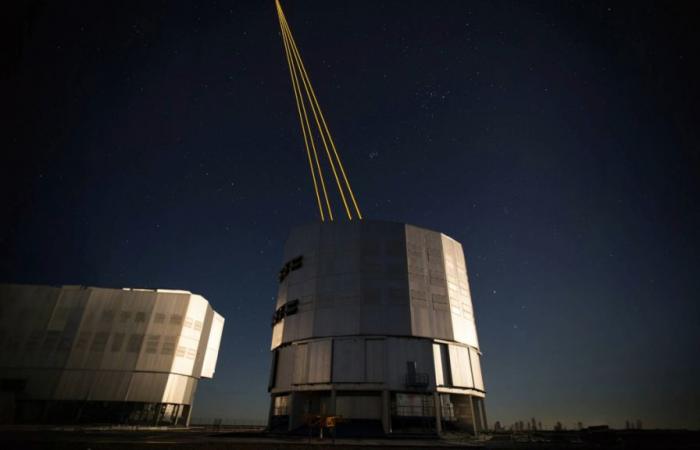
NASA has taken a decisive step forward in space communications. A laser signal, sent 466 million kilometers away, was successfully received. This feat, thanks to Deep Space Optical Communications technology, paves the way for more efficient exploration.
An innovation that will change communication in Space
A major technological feat has just been accomplished by NASA, potentially opening new avenues in space exploration. The American space agency managed to transmit a laser signal to its Psyche spacecraft, located 466 million kilometers from our planet, and this signal was received. This success demonstrates the robustness of laser communication in Space and promises to significantly improve our communication capabilities with probes and future space missions.
This technical feat, achieved by Deep Space Optical Communications technology, far exceeds previous attempts. It sends data at speeds up to 100 times faster than the radio frequencies currently used. This substantial difference allows the transmission of more complex and high-resolution data, crucial for the analysis of detailed scientific data. However, this performance requires unparalleled precision in signal transmission and reception.
The Psyche spacecraft, launched in October 2023, was chosen for this experiment, its main mission being the study of the asteroid of the same name. NASA’s goal is not only to demonstrate the feasibility of laser communication, but also to validate its capabilities in real-world conditions, overcoming the challenges of distance and space disturbances. The distance traveled, equivalent to the Earth-Mars distance at its greatest separation, underlines the magnitude of this achievement.
The success of this transmission at such a great distance represents a decisive step for the future of space missions, and particularly manned missions to Mars. Increasing the throughput and quality of communication will make it possible to collect and transmit information crucial to understanding asteroids and planets, as well as planning and managing long-term space missions.
An encouraging success
The experience was not without its challenges. As Meera Srinivasan, project operations manager at NASA’s Jet Propulsion Laboratory, points out, laser communication requires extreme precision. Before the launch of Psyche, engineers were unaware of the degree of performance degradation at such distances. Through this successful test, the accuracy and techniques for targeting and tracking signals were validatedconfirming the viability of optical communication as a robust and revolutionary method of space exploration.
The announcement of this success received congratulations from NASA Administrator Bill Nelson, who stressed the importance of this breakthrough. Laser communication represents a real breakthrough in our understanding and interaction with space. The transmission of high-definition images, such as the famous photo of the Taters cat, also demonstrates the capability of this new technology.
It is crucial to note how the transmission speed changes as the spacecraft moves further away. While the probe was still relatively close to Earth, transmission rates reached 267 megabits per second, but decreased significantly with increasing distance, clocking in at around 8.3 megabits per second during record transmission. This decline illustrates the technical challenges to be met for effective communication over vast distances.
Mission Mars
Advances in laser communication are not only linked to speed gains. Improving the accuracy and reliability of transmissions also plays a critical role in the collection and analysis of scientific data. The increased efficiency of laser communication will make it possible to better understand the composition of asteroids and planets, but also to ensure the safety of manned space missions.
This success opens new perspectives for the exploration of the solar system. The analysis of the data collected using this technology will not only allow us to better understand the composition and evolution of asteroids, but also to improve space communication technologies for future missions.
Further developments in this area, coupled with improvements in error correction techniques, open doors to more complex and ambitious space missions, such as the colonization of Mars, collecting samples from distant moons or studying planetary systems.
The successful sending of a laser signal 466 million kilometers from Earth is a significant advance in the field of space communication. It marks a milestone in our ability to explore and understand the universe, and promises to revolutionize the exploration of the solar system for decades to come. Technical challenges remain, but NASA’s perseverance and technological innovation open promising horizons in the conquest of space.





